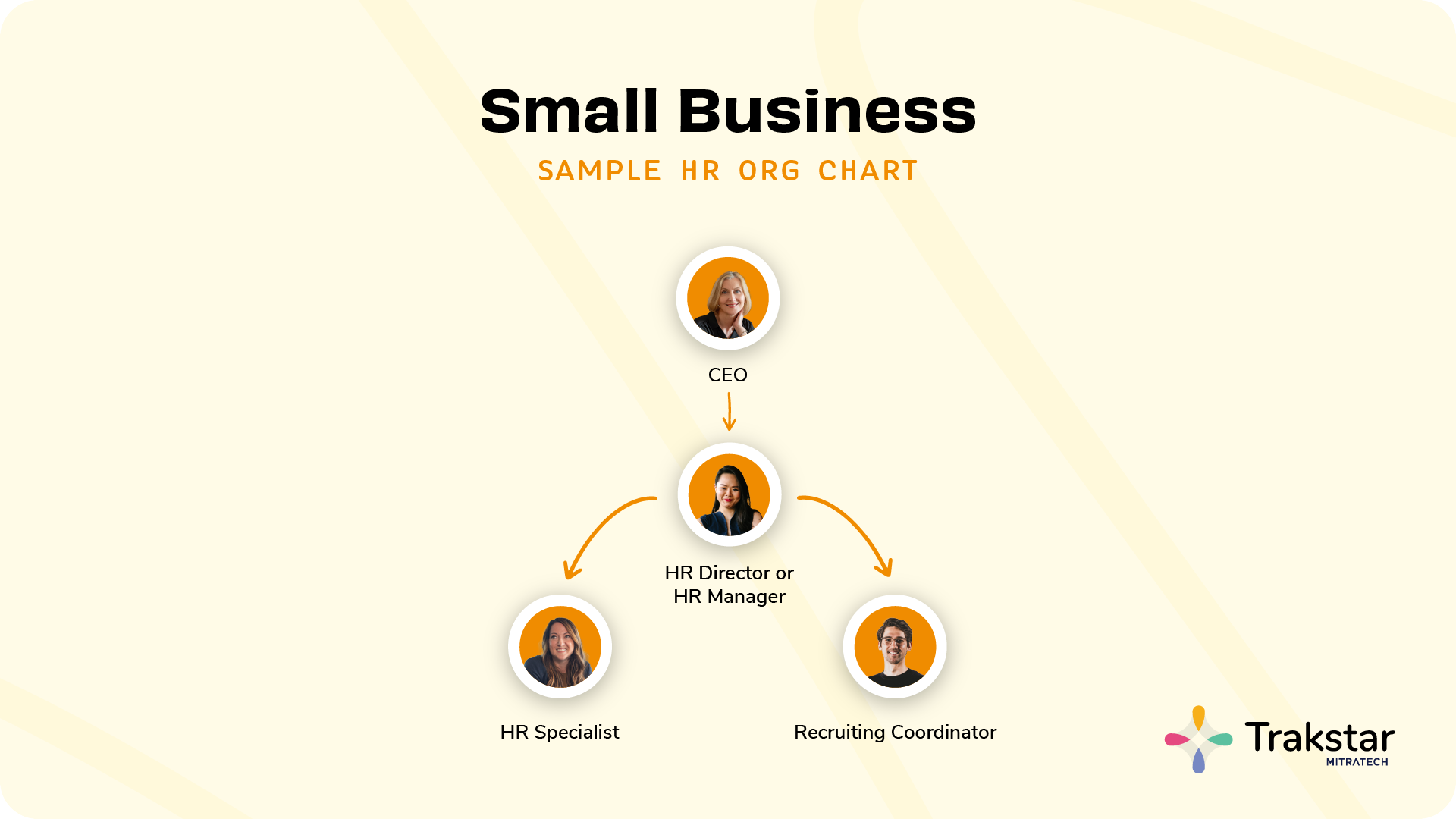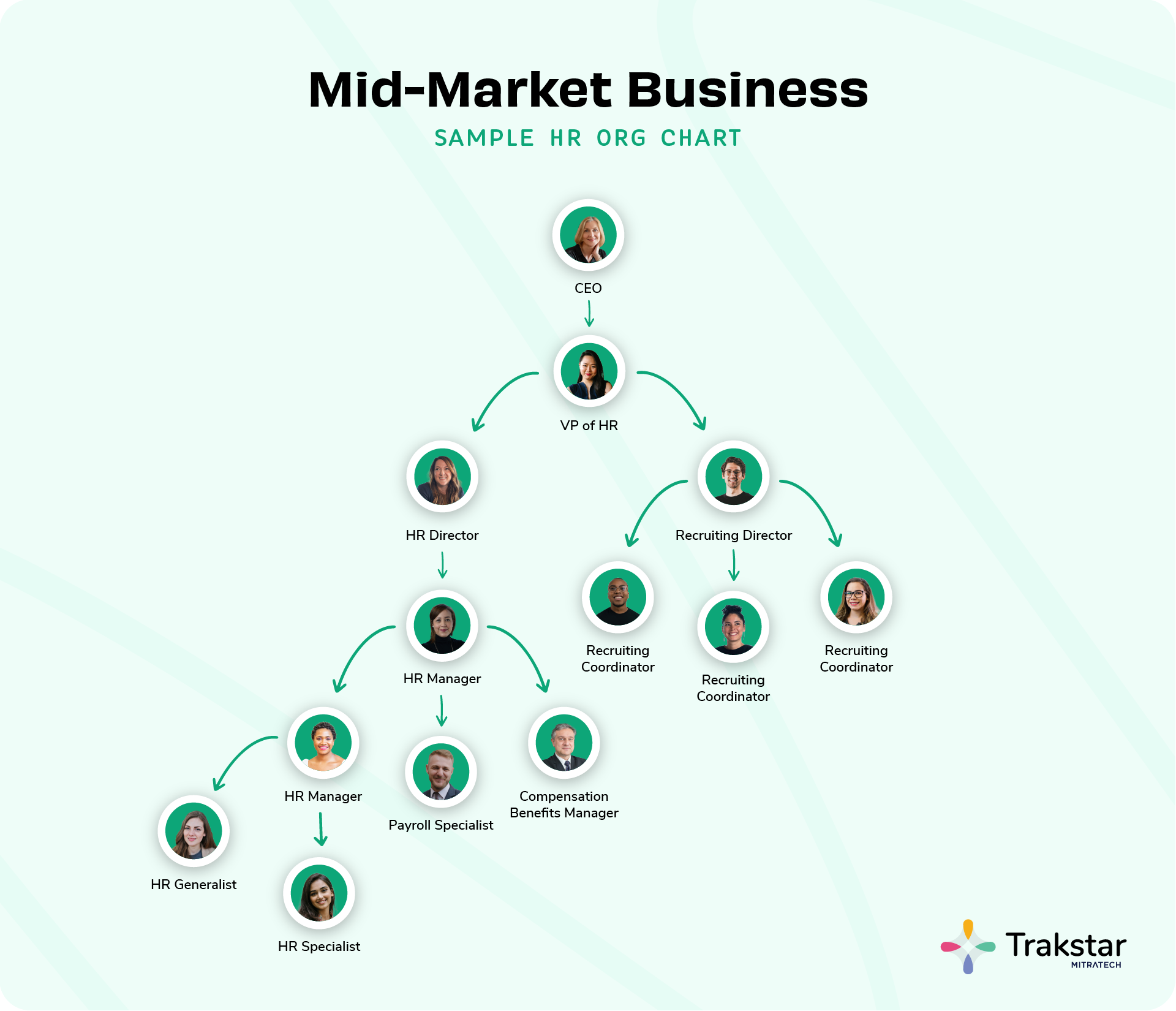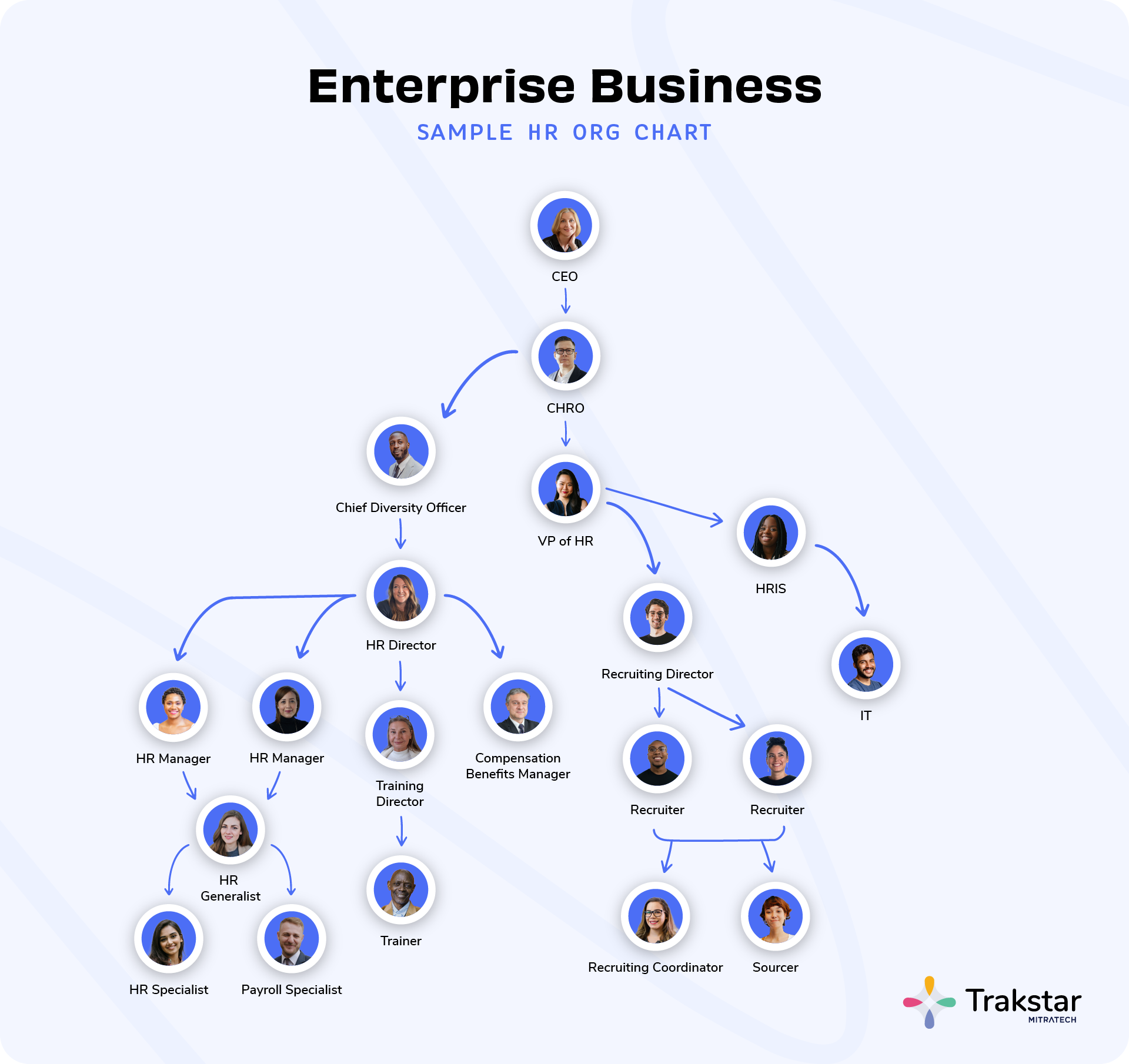What Should Your HR Department Look Like?
Posted by Noel • June 26, 2023 (Last modified January 11, 2024) • 8 min read
We all know that the portrayal of HR departments (and even HR professionals) in books, movies, and television is wrong. But the question often gets asked in new and growing businesses: what should your HR department look like?
It’s easier to answer this question definitively if you know your HR leaders, goals, budget, and organization. However, we work with HR professionals daily and have seen some trends that lead to better human resource management, more employee engagement, and increased happiness at work.
In this blog, we’ll cover just a small section of what your HR department “should” look like and how you can grow it from the ground up.
What is Human Resources?
Human Resources, also known as HR, is a department within an organization that deals with the management of its workforce. It is responsible for recruiting and hiring employees, managing employee benefits and compensation packages, developing training programs to improve employee skills, overseeing performance evaluations, and handling workplace issues or conflicts. They are also responsible for managing HR KPI and metrics goals and employee relations, among other things.
The main goal of human resources is to ensure that the organization has the right people to help it achieve its goals. This includes finding top talent from various sources such as job postings or recruitment agencies, ensuring all employees are aligned around the same set of goals, building company culture, HR reporting, and welcoming in any new employee that is hired.
HR also plays a critical role in creating a positive company culture that fosters teamwork and collaboration. By creating policies that promote diversity and inclusion, HR helps create a work environment where all employees feel valued regardless of their background or experience. In reality, HR shapes the employee experience and employee retention for the entire organization, from the newest hires to executive leadership.
Human resources departments are responsible for ensuring compliance with laws related to employment practices, such as discrimination laws and labor regulations. They work closely with legal teams to develop policies that protect employers and employees while promoting fairness in the workplace.
The more employees an organization has, the more HR initiatives, HR staff, and HR responsibility there will be.

Types of Roles in HR
Human Resources is an essential department in any organization, encompassing various roles. The HR team manages employee relations, recruitment, training and development, compensation and benefits administration, and compliance with labor laws and regulations.
One of the crucial positions in HR is the HR Generalist, who performs a broad range of tasks such as onboarding new hires, maintaining personnel files (like I-9 management, for example), and conducting performance reviews. A recruitment specialist identifies talent needs within the organization to attract qualified candidates for open positions. This type of person would work with Trakstar Perform or Trakstar Hire.
The Training Manager creates a practical learning experience for employees to develop their skills through workshops or online courses. They would work within the Trakstar Learn software to help with training to improve employee performance, onboarding (such as administering training about the employee handbook, for example), or when there is some organization-wide training that needs to occur.
Another critical role in HR is Employee Relations Manager, responsible for managing conflict resolution between management and staff while ensuring compliance with company policies regarding workplace behavior. They may help answer employee requests about specific things, or they may be the ones requesting 360 reviews for managers during performance review season.
An HR Analyst collects data related to hiring trends in different departments to make informed decisions about workforce planning. This person would work with the analytics software, much like Trakstar Insights, a built-in dashboard on each of Trakstar’s products.
Understanding the different types of roles within Human Resources can help organizations structure their departments effectively while promoting better organizational culture through efficient management of people’s processes.
HR for Small Businesses

Small businesses have unique needs when it comes to HR. Typically, there are only a few employees, so the HR department may consist of just one person or even be outsourced entirely. However, regardless of size, every organization should prioritize employee engagement and satisfaction to maintain a positive workplace culture.
In smaller companies, HR is often responsible for everything from hiring to benefits administration to compliance with labor laws. This requires a jack-of-all-trades approach and the ability to adapt quickly as business needs change.
One important aspect of HR for small businesses is establishing clear policies and procedures that can scale as the company grows. It’s also crucial to stay up-to-date on employment regulations at both state and federal levels.
Another challenge smaller organizations face is managing diversity and inclusion efforts with limited resources. While larger companies may have dedicated diversity officers or entire teams devoted to these initiatives, small businesses must find creative ways to foster an inclusive environment without breaking the bank.
While the responsibilities of an HR professional in a small business may vary widely depending on company size and industry type, prioritizing employee engagement and compliance are always critical components for success.
Mid-Size Business Human Resources Department

Mid-size businesses may have a more complex HR department compared to small businesses. They typically require specialized HR roles such as recruitment specialists, employee relations managers, and talent development officers.
In addition to these specialized roles, mid-sized companies may also require multiple generalists who can handle various aspects of HR daily. These generalists may manage benefits administration, workforce planning, and compliance with state and federal employment laws.
A key aspect of HR in mid-sized businesses is the ability to balance the needs of employees while still meeting the company’s strategic goals. This requires effective communication between management and employees so everyone is on the same page about company objectives.
HR Department at Large Businesses

In a large business, the HR department plays a critical role in ensuring that all employees are engaged and productive. With potentially thousands of employees, it’s important for HR to have streamlined processes in place to manage tasks such as onboarding, performance management, and benefits administration.
One key aspect of HR at large businesses is talent acquisition. Recruiting top talent can be challenging when competing with other companies for skilled workers. The HR team must work closely with hiring managers to create job descriptions that attract top candidates and conduct thorough interviews to ensure they hire the best fit.
Another important responsibility of HR is training and development. Large businesses often have diverse workforces with varying skill sets and backgrounds. It’s up to the HR team to provide ongoing training opportunities that help employees develop their skills, stay engaged, and contribute more effectively.
Compensation and benefits are also crucial areas where large business HR departments excel. With many different levels of employees across multiple locations or even countries, it’s essential for them to offer competitive salary packages along with comprehensive benefit programs which cater specifically to employee needs.

How Many People Should Be in HR?
The number of people in HR largely depends on the size and needs of your organization. One or two HR professionals might be sufficient for small businesses with fewer than 50 employees. They can handle all aspects of employee management, from recruitment to payroll.
Mid-sized businesses with between 50-500 employees may require a team of HR specialists, including recruiters, benefits administrators, and training coordinators. The team will need to work closely together to ensure seamless operation.
Large organizations with over 500 employees may have an entire department dedicated solely to human resources management. This includes multiple teams and departments, such as talent acquisition, compensation and benefits, employee relations, training, and development.
In terms of ratio calculation, the number of HR personnel required per employee varies depending on industry standards but typically ranges from 1:100 up to 1:250 depending on job complexity and organizational processes involved in managing human capital.
Human Resources vs. PeopleOps
Human Resources and PeopleOps are two terms that are often used interchangeably, but they have their own distinct differences. The main difference between HR and PeopleOps is the focus of each role.
HR focuses on traditional human resource management functions such as recruitment, payroll processing, benefits administration, employee relations, performance management, and compliance with laws. On the other hand, PeopleOps has a more forward-looking approach and mainly concentrates on creating an environment where employees can thrive.
PeopleOps aims to create a culture of engagement by improving communication channels within the organization and emphasizing employee satisfaction with a focus on work-life balance. This includes fostering an inclusive workplace culture that values diversity and inclusivity in hiring practices.
Moreover, while HR is reactive to problems or issues related to employees or workforce processes, PeopleOps takes a proactive approach to identifying challenges before they emerge in order to implement preventative measures efficiently.
Although both Human Resources (HR) & People Operations (PeopleOps) have certain overlapping responsibilities regarding workforce management, ultimately, they differ in their fundamental approaches toward managing people effectively for business growth.
Does Your HR Department Need A Hand?
The HR department is an essential aspect of any organization. From small businesses to large corporations, having a well-structured and efficient HR team can lead to better employee engagement, increased productivity, and lower turnover rates.
The size and hierarchy of your HR department will depend on various factors, such as the size of your company, industry type, budget constraints, and more. Evaluating these factors is crucial before deciding on the appropriate structure for your HR department.
HR departments should also adapt to changing times by considering incorporating new ideas that cater to an evolving workforce. For instance, summer in the workplace has become a popular topic lately, with many companies implementing summer Fridays or outdoor events that help boost employee engagement during hot weather months.
It’s important not just to focus on traditional roles within an HR team but also consider newer concepts like PeopleOps that may be better suited for certain organizations. By keeping up with industry trends while focusing on growth opportunities for both employees and the company as a whole – you’ll create a winning strategy!
Don't Miss Out on More Great HR Articles!
Subscribe to get the latest, greatest HR and Talent Development content straight to your inbox.


